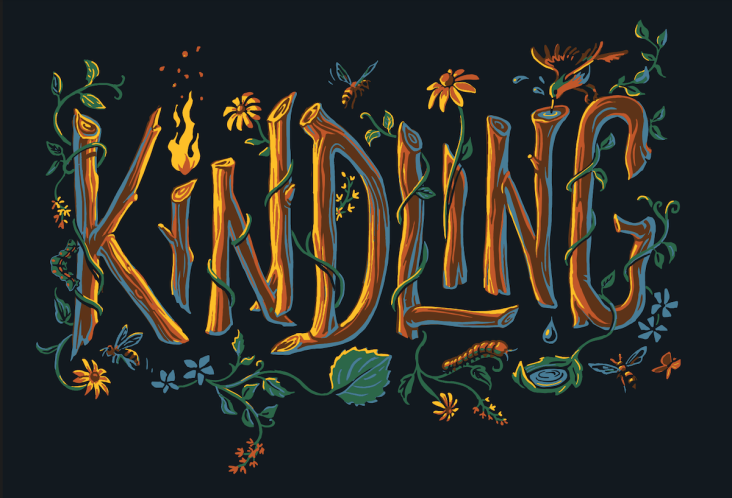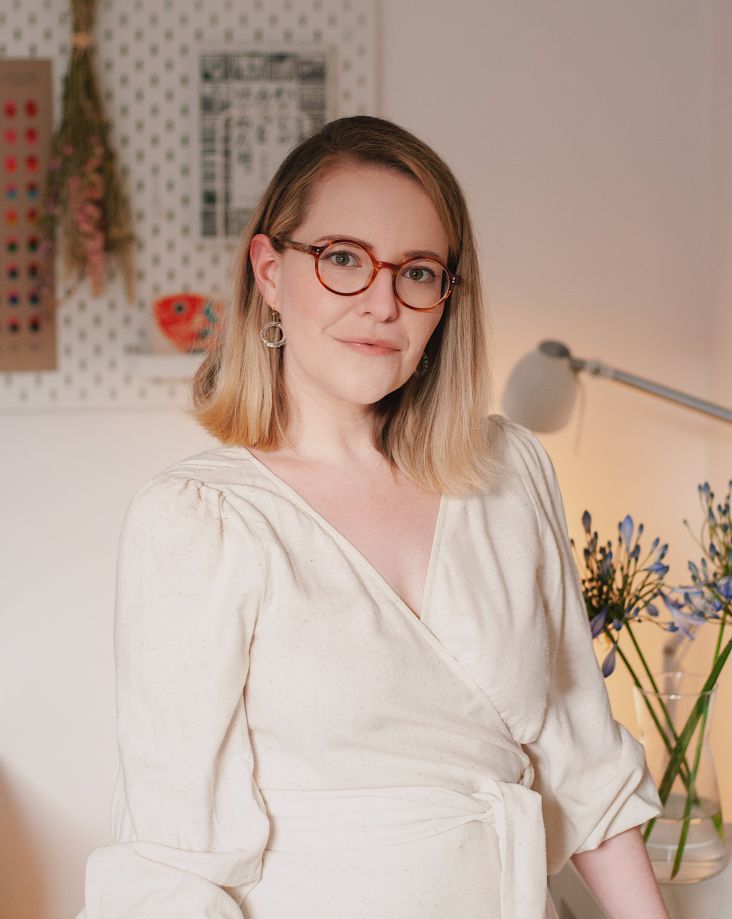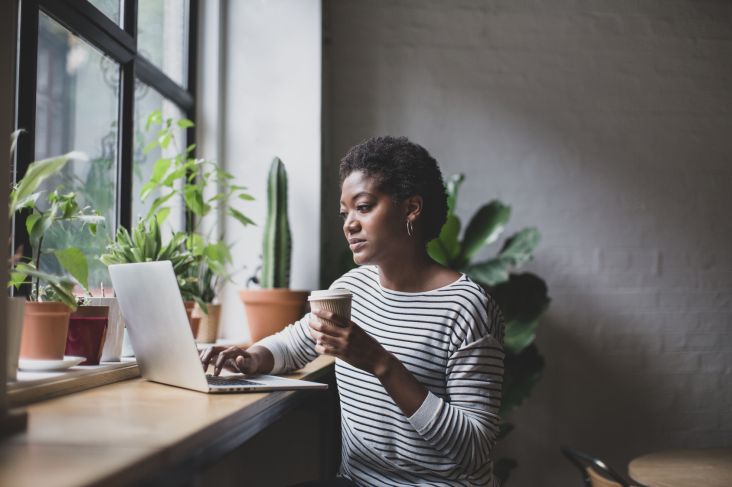Six reasons why you shouldn't be afraid to call yourself a graphic designer
It might sound strange, but many people who do graphic design feel embarrassed to call themselves a graphic designer. You may be one of them.

Image licensed via Adobe Stock
The reasons are many and varied. You may have only just started working or studying graphic design and don't feel you're "qualified" enough yet. You may have recently switched tracks from a different career and feel embarrassed that you've not been striving to be a graphic designer all your life. Or you may just think you're "not good enough" due to general insecurities, a bad experience at university, or something nasty that someone once said.
But here's the good news. You don't need an official qualification to call yourself a graphic designer, and there's no "design police" to decide who is and who isn't worthy. No one is out there judging how much experience or skills you have. So if graphic design is your thing, then you're a graphic designer.
Shillington, the leading design school, is offering short and intensive courses in the UK, USA, Australia and online, has a lot of experience at dealing with this kind of 'imposter syndrome'. And so we've teamed up with them for this article, explaining six solid reasons you shouldn't be afraid to call yourself a graphic designer.
Whether you're a newbie to graphic design, a current student, or an experienced creative looking for a change of career, you'll find great advice here – from creatives who've been in the exact same position as you.
1. Because everyone suffers from self-doubt
The first and most obvious reason to be shy about calling yourself a graphic designer is plain old self-doubt. If your instincts are telling you you're "not good enough", then it's difficult to ignore them. But one thing that helps is knowing you're not alone.
Absolutely every creative experiences self-doubt, and it's totally normal. If you don't believe us, listen to Emma Watson – one of the most famous and accomplished actresses in the world – talking to Rookie magazine in 2013.
"It's almost like the better I do, the more my feeling of inadequacy actually increases," she said. "Because I'm just going, 'Any moment, someone's going to find out I'm a total fraud and that I don't deserve any of what I've achieved. I can't possibly live up to what everyone thinks I am and what everyone's expectations of me are.'"
Sounds familiar? Well, it hasn't stopped Emma Watson, and it shouldn't stop you either. So it's vital to recognise self-doubt as something almost everyone suffers, detach yourself from it, and don't let it stop you from calling yourself a graphic designer.
2. Because talent is something that grows, not something you're born with
One of the reasons we suffer self-doubt is comparing our work unfavourably to that of more experienced designers. That's the exact reason Shillington Melbourne graduate Lauren Danger Koste, now studio manager at The Design Kids, worked in marketing for years rather than pursuing her true passion.
"I was working as a brand strategist/copywriter for almost a decade, for heaps of different businesses, from an ice skating rink in New Zealand to a PR agency in Washington, DC," she recalls. "While I loved the strategic aspect of my work, I noticed that I was always jealous of the graphic designer that got to communicate my strategy using design. I knew for years that I wanted to be a graphic designer, but I thought I couldn't be one because I wasn't some super talented illustrator or artist, which I now understand was just silly!."
The point here is that nobody in design is born "super-talented": everyone has to start from scratch and gradually build their skills over time.
The more experience you get, the better you get. But that doesn't mean you have to reach a certain level of accomplishment to call yourself a graphic designer. If you do graphic design, you are a graphic designer: it's as simple as that.
3. Because everyone has knowledge gaps
Even when you are experienced and have been working for some years, that doesn't mean you know everything. All creatives have knowledge gaps, but that's not a reason to think badly of yourself or suffer self-doubt. Instead, just take some practical steps to learn new skills.
Take Carla Zimbler, a graduate from Shillington Sydney. Coming from a media production background, she discovered a passion for animation and VFX and developed new skills in set/stage design and projection art. "My pre-existing clients were asking for motion graphics and animated type, and I was eager to go back to square one and learn the basics," she explains.
So she decided to take a full-time, three-month course at Shillington in New South Wales. "I realised that I had gaps in my knowledge, and Shillington was the perfect opportunity to completely immerse myself in design thinking and practice and meet like-minded creatives in an intimate class setting," Carla explains. "I realised I prefer intensive-style learning as it helps me stay focused and on track."
One of the roots of self-doubt is our tendency to compare ourselves with the brightest and best in our profession. Don't just think about how far you have to go, but think about how far you've come already.
4. Because mistakes are part of the process
Something else that feeds self-doubt is when you make a mistake. But as Ximena Jimenez, a graduate of Shillington Melbourne and now a web designer at Black Magic Design points out, mistakes aren't something to be ashamed of. In fact, they're exactly how designers learn and improve.
This is something Ximena discovered when she took a Shillington course in Brisbane as a way of bolstering her previous education. "Making as many mistakes as possible in a learning environment is a good opportunity to grow and prepare you for a professional working environment," she points out.
It took a little time to come to this realisation, though. "At the start, I quickly felt caught up with being a 'good' student and being the best in the class," she reveals. "It was only months later that I understood: becoming 'good' takes time and practice—it cannot be rushed. Communicating with your teachers is important; they are here for you and will guide you through the process. If you find yourself panicking, remember: reach out to your teachers and classmates—they are often your best resource."
Shillington London graduate Rob Key, founder of Studio Change and Change Space, graduated from Shillington five years ago and added this advice. "Try not to get boxed in too soon," he stresses. "Explore, experiment, find your own style and approach. It's easy to get distracted by the latest trend! The most important thing in life and work is to be authentic and a good human. The rest usually takes care of itself."
5. Because you've come a long way
One of the roots of self-doubt is our tendency to compare ourselves with the brightest and best in our profession. But what's more constructive is to compare ourselves as designers now with our abilities in the past.
In other words, don't just think about how far you have to go, but think about how far you've come already. If you're finding this difficult, then take practical steps to formalise the process. For instance, you could create a space on your wall to pin up kind emails and social media messages, along with certificates from training and pieces of work you're most proud of.
6. Because you don't have to have just one career
A final reason people are afraid of calling themselves a graphic designer is if they originally trained in a different profession. Take Oyinkan Karunwi, who originally studied to be a lawyer.
"It took me a while to see design as a viable career," she recalls. "I designed my first poster back at university in Nottingham for a friend's party. After that, students started paying me to design posters for their parties and student union events. I couldn't believe I was being paid to design."
Design soon became a hobby she could make some extra income from. "I used YouTube videos to teach myself how to use some of the Adobe software, and I made do with that at the time," she recalls. "After three years working as a business advisory associate, I realised that the weekends and late nights I spent designing for clients brought me more joy and fulfilment and sometimes, even more income than my job as an associate."
Finally, she took the plunge and retrained as a designer at Shillington New York. "I had high expectations for the course, and it surpassed all of them," she says. "It's intense, but you have all the tools and the support you need to come out at the end of it with a portfolio you can be proud of. If finding a career in design is what you want, then it's without a doubt the best step you can take towards achieving that goal."
Get a career in graphic design by studying at Shillington
Want to start a career in graphic design, build on your existing design skills, or switch careers from another profession? Shillington is the original graphic design bootcamp, with no experience required.
Shillington provides an inspirational learning environment where you'll learn relevant industry skills, including design theory, typography, packaging, branding, digital design and UX/UI, from practising designers. You can study either in person, at campuses in the UK, US and Australia, or online, and you'll graduate with a polished graphic design portfolio, ready to kickstart your creative career.
Courses are three months full-time or nine months part-time. And as Shillington Manchester graduate Carl McBride – now a junior designer at Toyfight – says: "It's intense, but you have all the tools and the support you need to come out at the end of it with a portfolio you can be proud of. If finding a career in design is what you want, then it's without a doubt the best step you can take towards achieving that goal!"





 by Tüpokompanii](https://www.creativeboom.com/upload/articles/58/58684538770fb5b428dc1882f7a732f153500153_732.jpg)


 using <a href="https://www.ohnotype.co/fonts/obviously" target="_blank">Obviously</a> by Oh No Type Co., Art Director, Brand & Creative—Spotify](https://www.creativeboom.com/upload/articles/6e/6ed31eddc26fa563f213fc76d6993dab9231ffe4_732.jpg)
















